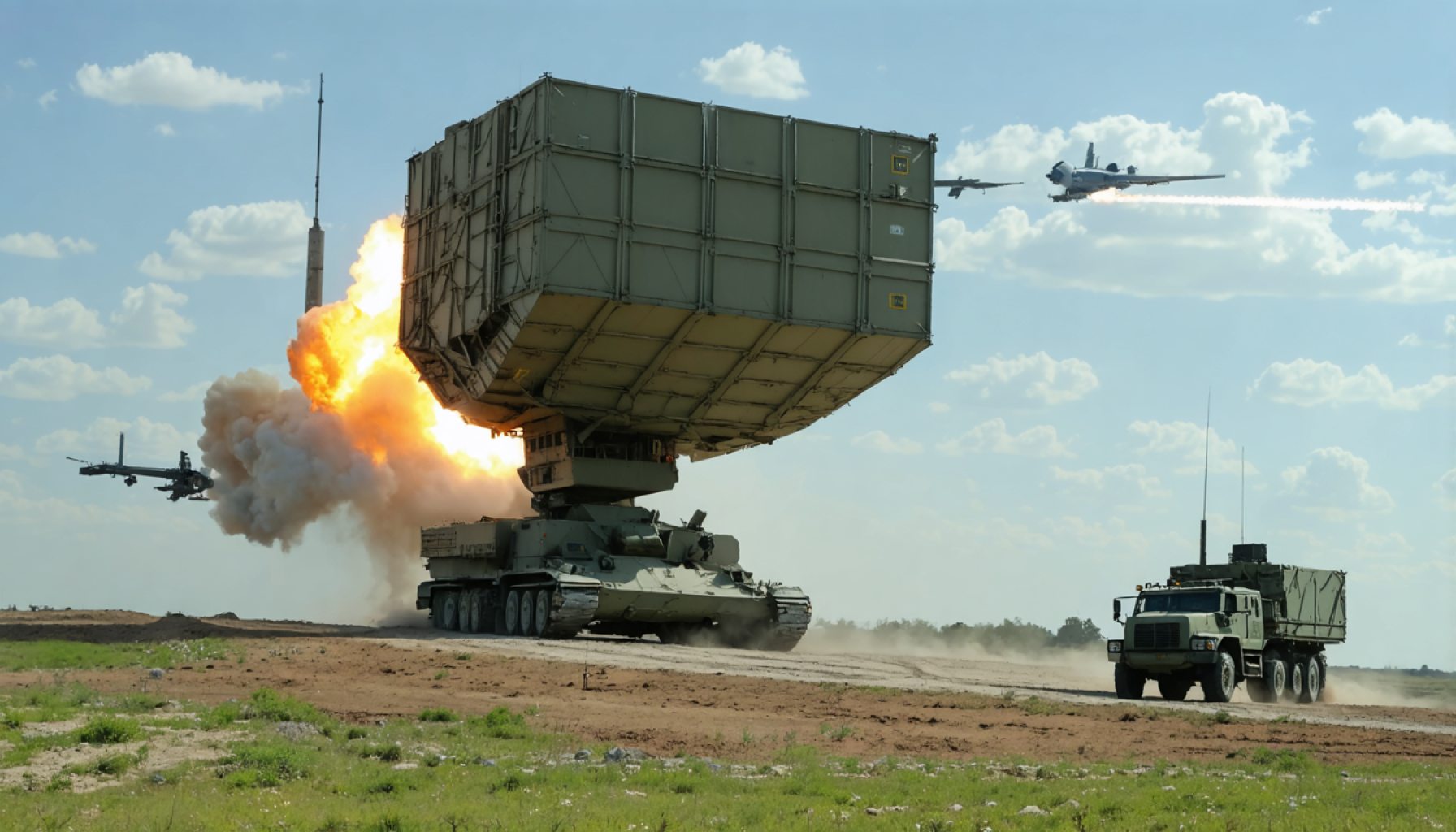- The Iron Dome, Israel’s advanced defense system, played a crucial role in intercepting rockets launched from the Gaza Strip, highlighting its precision and speed.
- The system is designed to protect against rockets and artillery, showcasing Israel’s resilience and technological innovation.
- Colonel Avichay Adraee emphasized the ongoing cycle of violence and its impact on civilians, underscoring the importance of constant vigilance.
- The Iron Dome offers hope and a semblance of normalcy by safeguarding communities and reinforcing the conversation on modern warfare defense strategies.
- This event illustrates the dual nature of technology in modern life, capable of both destruction and protection, advocating for innovation focused on security and peace.
- The effectiveness of the Iron Dome highlights the potential of human creativity when utilized for protective measures and a more secure future.
As twilight descended over the southern Israeli landscape, a familiar yet unsettling sound pierced the air. Sirens echoed through Nir Yitzhak, Sufa, and Holit, sending communities into a burst of frantic but practiced action. Against the backdrop of a tranquil sunset, the threat was all too real. Nestled among these areas, the Iron Dome, Israel’s technological marvel, stood sentinel, ready to crush the invisible danger from the sky.
In quick succession, three rockets launched from the tumultuous Gaza Strip. Their path marked a sinister arc across the firmament, unseen yet certain in their intent. Swiftly, the Iron Dome, a system known for its precision and remarkable speed, sprang into action. It swept the firmament with calculated urgency, detecting and obliterating incoming projectiles, ensuring the safety of countless lives below.
Designed to intercept rockets and artillery shells, this defense system has become an emblem of resilience and technological prowess for Israel. Developed with the relentless rigor typical of its engineers, the Iron Dome leverages radar and real-time computing to perform its life-saving ballet. It predicts trajectories, evaluates threats, and within seconds, fires interceptor missiles to annihilate incoming dangers.
This event underscores a harsh reality—one of constant vigilance in an embattled region. Colonel Avichay Adraee of the IDF’s Arabic language unit articulated the bleak cycle of violence. With undeniable clarity, he emphasized that the launch of rockets serves to further the suffering of civilians on both sides.
Yet, amid these tensions, the Iron Dome’s effectiveness offers a glimmer of hope, a testament to human ingenuity in the face of adversity. It shields communities and grants its people the semblance of normalcy in a region yearning for peace. The unyielding quest for safety and security drives this innovation, sparking a crucial conversation on deterrence and defense in modern warfare.
In a world where technology often blends seamlessly with the tapestry of daily life, the Iron Dome stands as a stark reminder of our dual-edged reliance on it—capable of both destruction and salvation. Its presence and prowess highlight a compelling narrative: when creativity is marshaled to protect rather than to harm, it becomes a force that can transcend mere survival, charting a path towards a more secure tomorrow. As long as these technological guardians stand watch, the promise of peace remains a goal worth chasing, even amidst the shadows of conflict.
The Secret Behind the Iron Dome: How Israel’s Tech Marvel Shields a Nation
Overview of the Iron Dome
The Iron Dome is a critical component of Israel’s defense strategy, designed to intercept and destroy short-range rockets and artillery shells. First deployed in 2011, this system exemplifies Israel’s cutting-edge approach to defense technology. Developed by Rafael Advanced Defense Systems and Israel Aerospace Industries, the Iron Dome operates 24/7, offering a layer of protection that is both reassuring and essential in the turbulent region.
How the Iron Dome Works
1. Detection and Monitoring: The Iron Dome uses advanced radar systems to detect incoming threats in real-time.
2. Threat Analysis: Complex algorithms predict the trajectory of the rocket, determining if it poses a danger to populated areas.
3. Interception: If deemed dangerous, the system launches a counter-missile to intercept and neutralize the threat mid-air.
Real-World Use Cases
The Iron Dome has proven indispensable during multiple conflicts, saving countless lives by preventing rockets from reaching urban areas. The system can handle multiple threats simultaneously, significantly reducing civilian casualties and infrastructure damage.
Market Forecasts & Industry Trends
Globally, there is a growing interest in similar defense systems. Countries like the United States and several European nations are either developing or acquiring such technology, recognizing its effectiveness in modern warfare. The defense market for interception systems is forecasted to reach billions of dollars over the next decade, with innovations focusing on refining accuracy and reducing costs.
Features, Specs & Pricing
– Range: Capable of intercepting threats up to 70 kilometers away.
– Cost: Each interceptor missile costs an estimated $40,000 to $100,000, contributing to the system’s high operational cost.
– Deployment Speed: Can be deployed rapidly to hotspots, with setup times measured in sharp response to evolving threats.
Limitations
Despite its success, the Iron Dome is not infallible. It isn’t designed to intercept high-altitude missiles or threats originating from aircraft. Additionally, its high operational costs underscore the financial burden of sustained conflicts.
Security & Sustainability
Continuous upgrades aim to improve efficiency and reduce costs, ensuring sustainability. Efforts to integrate the Iron Dome with other defense systems seek to create a comprehensive shield against a variety of threats.
Insights & Predictions
As technology advances, experts predict even more refined interception systems, capable of handling a broader range of threats with greater precision. The integration of artificial intelligence and machine learning could further enhance decision-making speeds and interception success rates.
Pros & Cons
Pros
– Provides essential protection and peace of mind.
– Saves human lives and protects infrastructure.
– Continually evolving with technological advancements.
Cons
– High operational costs.
– Limited in scope regarding high-altitude or aircraft threats.
Actionable Recommendations
– Public Awareness: Educate communities about the importance and functioning of defense systems like the Iron Dome to foster understanding and support.
– International Collaboration: Countries can collaborate to develop cost-effective, integrated defense solutions.
– Investment in R&D: Continually invest in research and development to adapt to changing threat landscapes.
Conclusion
The Iron Dome stands as a powerful symbol of resilience and technological innovation, a beacon of hope in a region fraught with conflict. While it exemplifies the darker sides of technology’s role in modern warfare, it also showcases what can be achieved when creativity is harnessed for protection. As long as such systems remain vigilant, they help secure the promise of peace, offering a semblance of normalcy amid chaos.
For more innovative insights into cutting-edge defense technologies, explore further at Israel Aerospace Industries.







